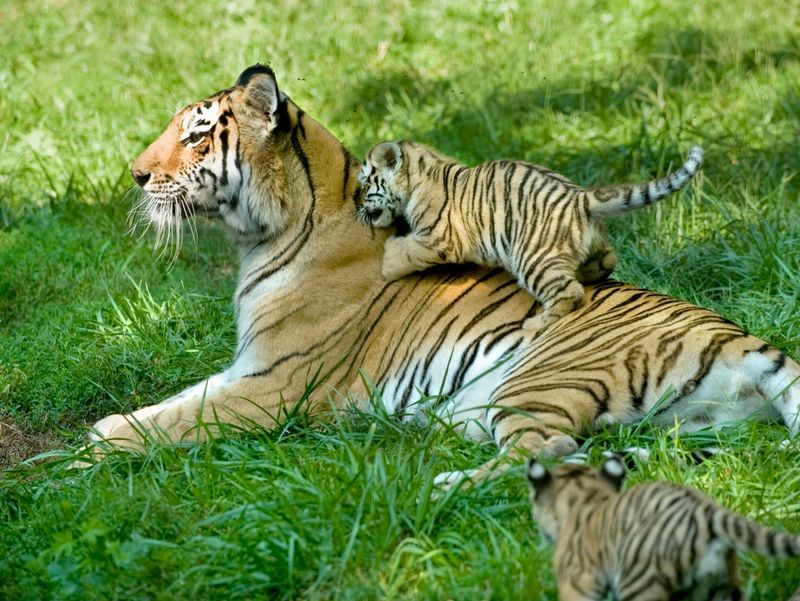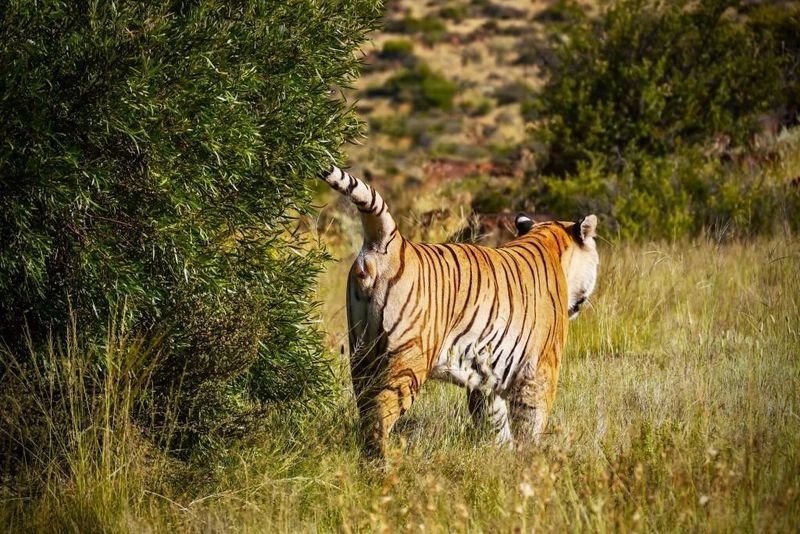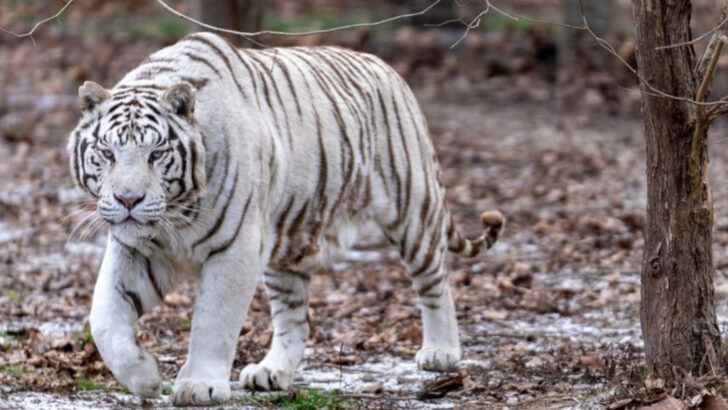Tigers aren’t just big cats—they’re walking legends.
Silent when they stalk.
Explosive when they strike.
Every step they take in the wild pulses with power and mystery.
They’re more than orange stripes and fierce eyes.
They can swim for miles, take down prey twice their size,
and vanish into the jungle without a sound.
But for all their muscle and majesty,
some truths about tigers hit harder than their roar.
Not all stories have happy endings.
Not all facts are fun.
So, while we’re diving into the coolest bits of tiger trivia,
we’re also pulling back the curtain on a few things
that may just stick with you longer than you expect.
Love tigers?
This one’s for you.
The Roar of a Tiger

A tiger’s roar is one of the most powerful sounds in the animal kingdom. It can be heard up to 3 kilometers away, serving as a crucial communication tool. The roar helps tigers mark their territory, ward off rivals, and find mates.
Interestingly, each tiger has a unique roar, much like a human fingerprint. This uniqueness allows them to identify each other in the wild. Imagine the thrill of hearing such a commanding call echo through the jungle, a sound that resonates with strength and majesty. Truly, the roar of a tiger is an unforgettable experience.
Tigers’ Striking Stripes

Did you know that no two tigers have the same stripe pattern? Like human fingerprints, each tiger’s stripes are unique, providing them with camouflage in their natural habitat.
These patterns help them blend seamlessly into the forest, making it easier to stalk prey. The stripes also play a role in social interactions, as tigers recognize each other by their distinct markings. It’s fascinating how nature endows these magnificent animals with such beautiful and functional designs. Next time you see a tiger, appreciate the artistry in its stripes.
Tigers Are Solitary Creatures

Unlike lions, tigers prefer a solitary lifestyle. They are fiercely territorial, marking their domain with scent markings and vocalizations. This solitary nature ensures they have enough prey to sustain themselves.
Tigers only come together for mating or when a mother is raising her cubs. This independence highlights their strength and adaptability in the wild. Observing a lone tiger patrolling its territory is a testament to its solitary prowess and survival. These solitary giants remain a symbol of independence and strength.
The Night Hunters

Tigers are primarily nocturnal hunters, taking advantage of the cover of darkness to stalk prey. Their night vision is six times better than that of humans, allowing them to see clearly in low light conditions.
This nocturnal lifestyle gives them an edge over their prey, enabling them to hunt with precision and stealth. Watching a tiger on the prowl under the moonlight is a thrilling scene, showcasing its prowess as a top predator. These magnificent hunters rule the night with grace and power.
Cubs and Their Playful Nature

Tiger cubs are the epitome of playful innocence, spending their early months exploring and learning from their mothers. Their playful antics are not just for fun; they play a vital role in developing hunting skills and social behaviors.
Watching cubs pounce and tumble is a delightful experience, revealing the charming side of these fierce predators. The bond between a mother and her cubs is strong, with play being an essential part of their development. These frolicsome youngsters remind us of the tender beginnings of a tiger’s life.
Tigers’ Love for Water

Unlike most big cats, tigers love the water. They are strong swimmers and often enjoy taking a dip to cool off in hot weather. This affinity for water helps them catch prey by swimming across rivers and lakes.
Tigers have been known to swim several kilometers at a stretch, showcasing their strength and adaptability. Observing a tiger glide through the water is a majestic sight, blending power with grace. Their love for water sets them apart from other feline species, adding to their enigmatic charm.
The Mighty Jaws

A tiger’s jaws are one of its most formidable weapons. With powerful muscles and sharp teeth, they can deliver a crushing bite to their prey. Tigers use their jaws to grip and hold onto their quarry, ensuring a swift and efficient kill.
The strength of their bite is awe-inspiring, capable of breaking bones with ease. This formidable feature is essential for their survival in the wild, enabling them to tackle large prey. Witnessing the might of a tiger’s jaws in action is a testament to its place as an apex predator.
The Importance of Territory

Territory is vital for a tiger’s survival, providing access to food and mates. Tigers mark their territory with scent markings and scratches on trees, creating a map of their domain.
These markings communicate to other tigers the boundaries of their territory, helping avoid conflicts. A well-defined territory ensures a tiger has enough resources to thrive. The concept of territory is crucial in understanding tiger behavior and their interactions with each other. It’s a fascinating aspect of their lives that underscores their independence.
The Threat of Extinction

Tigers face the grim reality of extinction, with only around 3,900 left in the wild. Habitat loss, poaching, and human conflict have drastically reduced their numbers. Conservation efforts are crucial to preserving these incredible animals.
Raising awareness and protecting their habitats are essential steps in ensuring their survival. The plight of tigers is a poignant reminder of the impact of human activity on wildlife. It’s a call to action to protect these majestic creatures before it’s too late. They deserve a future where they can roam free in their natural habitats.
Tiger’s Role in Culture

Tigers hold a significant place in many cultures, symbolizing power and strength. In India, they are revered in mythology and art, often depicted as the mount of the goddess Durga.
Their majestic form inspires artists, poets, and storytellers worldwide. This cultural significance highlights the deep connection between humans and these powerful animals. The tiger’s presence in folklore and art adds to its mystique, making it a symbol of awe and respect. Exploring these cultural expressions reveals the profound impact of tigers on human imagination.
Tigers in Zoos and Sanctuaries

Zoos and sanctuaries play a role in tiger conservation, providing a safe environment for these big cats. They help raise awareness and funds for conservation efforts, ensuring a future for wild tigers.
Visitors can observe tigers up close, learning about their behaviors and needs. While not a substitute for the wild, these facilities offer a glimpse into the lives of tigers, fostering appreciation and understanding. It’s a chance to connect with these majestic animals and support their conservation. Such initiatives are vital for their survival.
The Elusive White Tiger

White tigers, a rare genetic variant, captivate with their striking appearance. Their white coat and blue eyes make them stand out, yet they face challenges in the wild. The lack of camouflage hinders their ability to hunt, making survival difficult.
Breeding programs aim to preserve this unique variant, though ethical concerns exist about their genetic health. These enigmatic creatures continue to fascinate, embodying both beauty and vulnerability. The white tiger is a symbol of the delicate balance between nature and human intervention. Observing one is a rare and unforgettable experience.

